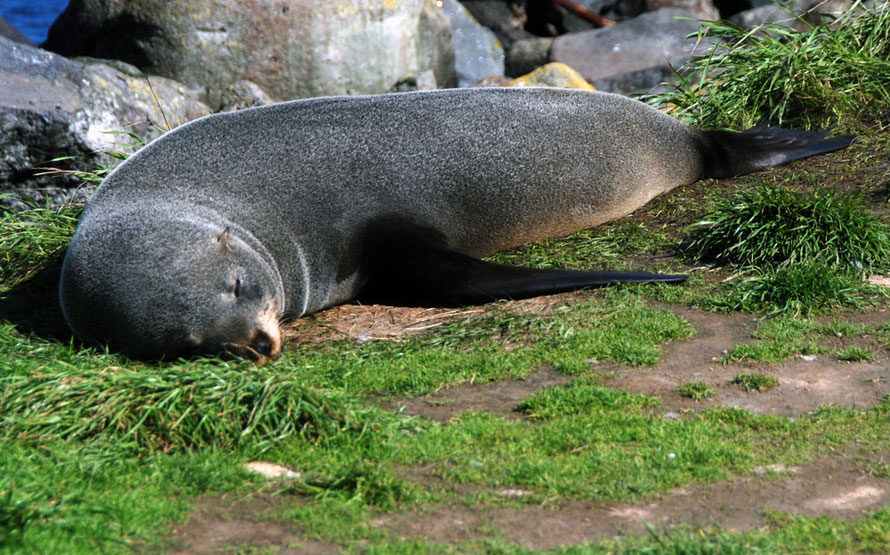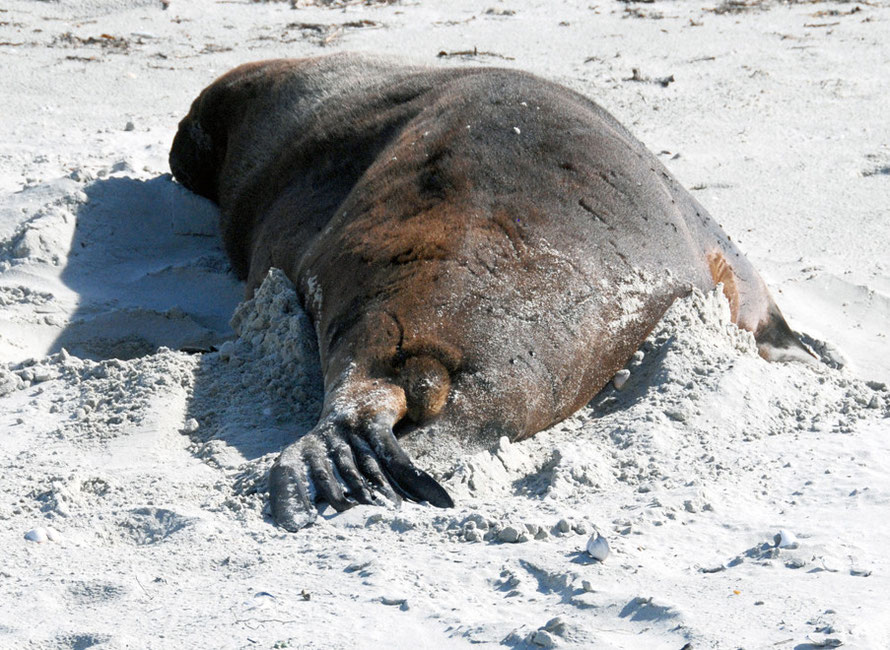New Zealand Birds and Mammals (12 pages)

These pages (see menu to right) are discrete entries on different birds and mammals we came across - the Toroa or Norther Royal Albatross, the delightful New Zealand Fur Seal/Kekeno) and Sea Lion/Pakake, Royal Spoonbills, Yellow-Eyed Penguins, the Buller's Mollymawk (a small albatross), Shags and our epic late-night stake-out to see the Sooty Shearwaters/Titi and Blue Penguins of Stewart Island.
As time goes on I will add more photos and categories of bird life.

Origins
Due to an evolutionary quirk - in part caused by the isolation of the New Zealand land mass after its separation from the Gondwana super continent 80 MYA - New Zealand has only one land-based mammal (a bat). For millions and millions of years it was a bird paradise with the huge Moa and the gigantic Haast's Eagle.
It birds evolved where they were no mammal or sizeable reptilian predators. But since the introduction of the rat, stoat, possum, dog and cat the bird population has been decimated. The Moa, a major source of dietary protein for Moari from the fourteenth century were gradually wiped out.
The arrival of Europeans led to a full scale assult on the seal, sea lions and whales of the New Zealand islands and seas. And the vast programme of bush and forest clearance began that was to reduce huge areas (about 51%) of New Zealand into a giant agricultural pump for producing first wool and then refrigerated lamb and dairy products and more recently dried milk solids.
This was a process very similar to what happened in Europe and in shorter timescales in the Americas. In New Zealand, one of the last Pacific outposts to be colonised, the process was further compressed and the terrible cost to the unique and alternative evolutionary path that New Zeland had followed for 80 million years was only slowly realised; thankfully just before it was too late.

Paradoxes
New Zealand is a land of paradoxes -
- a set of bird islands where the indigenous and endemic birds have been forced into tiny protected off-mainland island fortresses,
- a place where 1080 pesticides are air-dropped to wipe out and/or control the depredations of possum, rat, stoat, wild pigs, red and white-tailed deer and goats, taar and chamois (which with the exception of the Polynesian rat) that were all introduced wittingly or not by European settlers.
- a place of charming, spectacular and forebidding wilderness that stands in stark relief to the land stripped down to its not very fertile essentials, planted with exotic grasses and air-dropped with nitrogen and superphosphates to wring the last drop of milk and the last kilo of lamb from its pastures, paddocks and uplands.
There is a lot more to be said about this but not now. A great place to start on the origins and evolution of New Zealand's biota is the fantastically written, illustrated and produced book by George Gibbs, The Ghosts of Gondwana - The History of Life in New Zealand (2006, Craig Potton Publishing). It costs a lot but you will not regret it.

